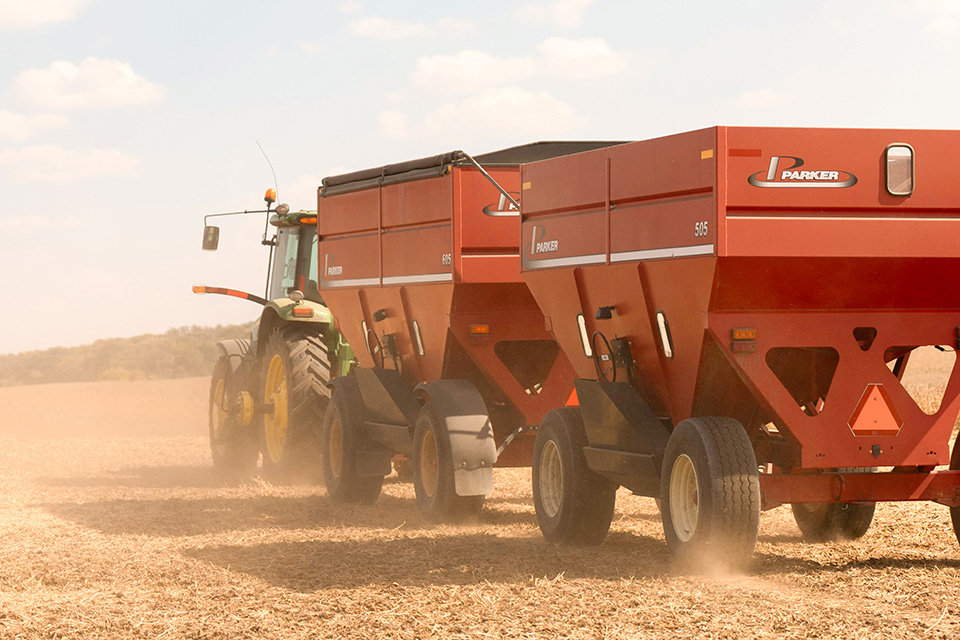
(Photo: Iowa Soybean Association / Joclyn Bushman)
Latest WASDE numbers relatively unchanged
December 14, 2023
“Fundamentally speaking, the December World Agricultural Supply and Demand (WASDE) was a snoozer on soybeans.”
That’s the message from Kristin Stien, grain marketing advisor from Eastern Iowa for Ever.Ag, an agricultural technology company providing information on innovation and technology, risk management and market intelligence.
“Nothing changed on the balance sheet and this came as a shock to the market,” she says. “That shock was realized with a 30-cent trading range that day. With decently sized export sales being made in soybeans and large sales being made in corn and wheat, many found it as a surprise that the export number didn't get adjusted.”
The U.S. Department of Agriculture (USDA) listed U.S. soybean ending stocks at 245 million bushels, unchanged from the November USDA estimate. The trade was expecting 246 million bushels.
The total U.S. oilseed production for 2023/24 is forecast at 121.5 million tons, down slightly due to a reduction for cottonseed. The U.S. season-average soybean price forecast is unchanged at $12.90 per bushel. The soybean meal price forecast is increased $10 to $390 per short ton. The soybean oil price is forecast at 57 cents per pound, down 4 cents.
Global oilseed production for 2023/24 is projected at 661 million tons, down 500,000 tons from last month. Lower soybean and seed production are partly offset by higher rapeseed production. Soybean production is lowered 1.5 million tons mainly on lower production for Brazil, reduced 2 million tons to 161 million reflecting hot and dry conditions in southern Mato Grosso and northeast Brazil. Partly offsetting is higher soybean production for Canada and Russia.
The global 2023/24 soybean outlook includes higher beginning stocks, lower production, increased exports, and slightly lower ending stocks. Beginning stocks are raised mainly on a 2-million-ton increase to 160 million for Brazil’s 2022/23 production based on higher-than-expected use through November. Increased supplies and early exports in the 2023/24 marketing year (starting October 2023) led to a 2-million-ton increase to Brazil’s exports. China’s imports are also raised 2 million tons to 102 million on strong early season shipments by major exporters. Global soybean ending stocks are reduced slightly as higher stocks for China are offset by lower stocks for Brazil.
“A surprise was the small change in South American production, where they (USDA) kept the Argentinian estimate the same and lowered Brazilian soybean production short of expectations,” Stien says.
ISA District 5 Director Corey Goodhue from Carlisle says the WASDE report did not indicate much for him to base any major decisions for the future.
“There was not a whole lot of fireworks in the report,” he says. “My fear today is am I doing enough to protect my margins?”
Goodhue says 2022/23 input costs were unbelievably expensive and is not sure what the markets are going to do as we move into 2024.
“There’s an old expression, ‘High prices cure low prices, and low prices cure high prices.’ There’s just no easy button.”
Stien says the December WASDE is not a good barometer on what’s going to happen in 2024.
“Many believe, and I tend to agree, that this was the USDA kicking the can down the road to the January report,” she says. “This is a common occurrence, especially when it comes to cutting production numbers, as it's still too early to truly know what the Brazilian crop is going to look like. The market has rebounded from the lower close and is on to trading the next news in circuit.”
Back